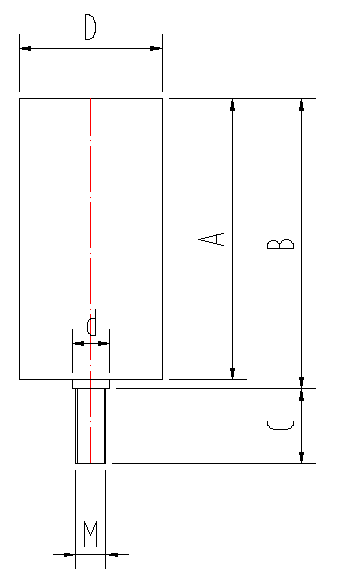 Afrikaans
Afrikaans  Albanian
Albanian  Amharic
Amharic  Arabic
Arabic  Armenian
Armenian  Azerbaijani
Azerbaijani  Basque
Basque  Belarusian
Belarusian  Bengali
Bengali  Bosnian
Bosnian  Bulgarian
Bulgarian  Catalan
Catalan  Cebuano
Cebuano  Corsican
Corsican  Croatian
Croatian  Czech
Czech  Danish
Danish  Dutch
Dutch  English
English  Esperanto
Esperanto  Estonian
Estonian  Finnish
Finnish  French
French  Frisian
Frisian  Galician
Galician  Georgian
Georgian  German
German  Greek
Greek  Gujarati
Gujarati  Haitian Creole
Haitian Creole  hausa
hausa  hawaiian
hawaiian  Hebrew
Hebrew  Hindi
Hindi  Miao
Miao  Hungarian
Hungarian  Icelandic
Icelandic  igbo
igbo  Indonesian
Indonesian  irish
irish  Italian
Italian  Japanese
Japanese  Javanese
Javanese  Kannada
Kannada  kazakh
kazakh  Khmer
Khmer  Rwandese
Rwandese  Korean
Korean  Kurdish
Kurdish  Kyrgyz
Kyrgyz  Lao
Lao  Latin
Latin  Latvian
Latvian  Lithuanian
Lithuanian  Luxembourgish
Luxembourgish  Macedonian
Macedonian  Malgashi
Malgashi  Malay
Malay  Malayalam
Malayalam  Maltese
Maltese  Maori
Maori  Marathi
Marathi  Mongolian
Mongolian  Myanmar
Myanmar  Nepali
Nepali  Norwegian
Norwegian  Norwegian
Norwegian  Occitan
Occitan  Pashto
Pashto  Persian
Persian  Polish
Polish  Portuguese
Portuguese  Punjabi
Punjabi  Romanian
Romanian  Russian
Russian  Samoan
Samoan  Scottish Gaelic
Scottish Gaelic  Serbian
Serbian  Sesotho
Sesotho  Shona
Shona  Sindhi
Sindhi  Sinhala
Sinhala  Slovak
Slovak  Slovenian
Slovenian  Somali
Somali  Spanish
Spanish  Sundanese
Sundanese  Swahili
Swahili  Swedish
Swedish  Tagalog
Tagalog  Tajik
Tajik  Tamil
Tamil  Tatar
Tatar  Telugu
Telugu  Thai
Thai  Turkish
Turkish  Turkmen
Turkmen  Ukrainian
Ukrainian  Urdu
Urdu  Uighur
Uighur  Uzbek
Uzbek  Vietnamese
Vietnamese  Welsh
Welsh  Bantu
Bantu  Yiddish
Yiddish  Yoruba
Yoruba  Zulu
Zulu Efficient Solutions for Conveyor Idler Roller Systems in Material Handling Applications
Understanding Conveyor Idler Rollers Essential Components for Material Handling Systems
Conveyor systems are integral to various industries, facilitating the efficient movement of materials and goods from one point to another. Among the critical components of these systems are conveyor idler rollers, which play a significant role in ensuring smooth operation and minimal wear on belts and equipment. This article will explore the importance, types, and maintenance of conveyor idler rollers.
What are Conveyor Idler Rollers?
Conveyor idler rollers, often simply referred to as idlers, are cylindrical components that support the conveyor belt. They are essential for providing the necessary tension and guiding the belt along its path, reducing the friction between the belt and the surface it moves over. Idlers help maintain the belt's alignment, contributing to the overall efficiency and longevity of the conveyor system.
Importance of Idler Rollers
The performance of a conveyor system heavily relies on the quality and functionality of its idler rollers. Properly functioning idlers minimize the wear and tear on the conveyor belt, ensuring a longer service life and reducing maintenance costs. Additionally, they help in maintaining the mechanical stability of the system, preventing issues like misalignment and belt slippage, which can lead to costly downtime.
Moreover, idler rollers contribute significantly to the energy efficiency of the conveyor system. When idlers operate smoothly and efficiently, the resistance on the conveyor belt is minimized, resulting in lower energy consumption. This efficiency is crucial in large-scale operations where energy costs can represent a significant portion of the overall operational expenses.
Types of Idler Rollers
conveyor idler rollers

Idler rollers come in various styles and designs to cater to the specific needs of different conveyor systems. The most common types include
1. Trough Idlers These are designed in a V-shape, which helps in guiding bulk materials along the conveyor belt. They are particularly suited for transporting heavy and loose materials.
3. Return Idlers Located on the return side of the conveyor belt, return idlers support the belt as it returns to the loading area. They ensure smooth transitions and prevent the belt from sagging.
4. Impact Idlers Designed to absorb the energy from heavy loads falling onto the conveyor belt, impact idlers protect the belt from damage, thereby extending its life.
Maintenance of Idler Rollers
Regular maintenance of conveyor idler rollers is essential to ensure their optimal performance. This includes routine inspections for signs of wear, misalignment, and any mechanical issues. Lubrication is also vital to reduce friction and prevent excessive wear on the bearings. Additionally, keeping the idlers clean and free of debris will help maintain their efficiency and prolong their lifespan.
In conclusion, conveyor idler rollers are critical components that significantly impact the efficiency and longevity of conveyor systems. Understanding their functions, types, and maintenance requirements can help businesses optimize their material handling processes, resulting in increased productivity and cost savings. Investing in high-quality idlers and adhering to proper maintenance protocols ensures a reliable conveyor system capable of meeting the demands of modern industrial operations.
-
Revolutionizing Conveyor Reliability with Advanced Rubber Lagging PulleysNewsJul.22,2025
-
Powering Precision and Durability with Expert Manufacturers of Conveyor ComponentsNewsJul.22,2025
-
Optimizing Conveyor Systems with Advanced Conveyor AccessoriesNewsJul.22,2025
-
Maximize Conveyor Efficiency with Quality Conveyor Idler PulleysNewsJul.22,2025
-
Future-Proof Your Conveyor System with High-Performance Polyurethane RollerNewsJul.22,2025
-
Driving Efficiency Forward with Quality Idlers and RollersNewsJul.22,2025





























